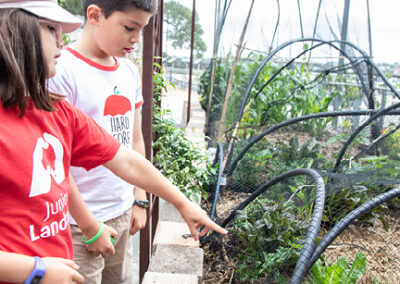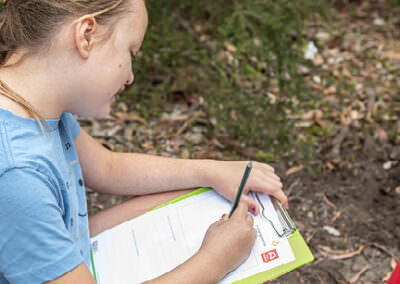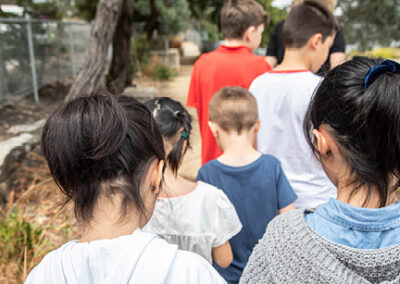
Creating a food garden: site assessment and mapping
Time Allocation: 30 minutes*
Activity Level: Moderate
Introduction
In this activity we will be getting to know our own grounds so that we can locate the best position for a food growing garden. Working in teams will help build skills for working together in the development of the food garden.
*Time allocation will be dependent on site selection and travel time.
Checklist
Instructions
 Step 1
Step 1
Mapping and understanding your local space will help you explore the possibilities and decide the best location for creating a food garden.
Begin discussion by exploring what plants need to grow in your food garden. Include discussion around water, light and soil.
Gather any background information including other maps to help your discussion.
Where is the best location for our food garden?
Explain that we will be exploring the grounds to determine what the best location might be for a food garden.
To determine the best location for the food garden, account for the access to water, sunlight and shade, and that many plants do not like to grow in windy areas.
 Step 2
Step 2
Define the areas you will explore together and distribute the printable activity sheets, pencils and clipboards. Children can work in groups.
If you have existing site maps, refer to it so that can point out north and other directions. Use the compasses to orient where north and south is and refer to it on your map/s.
Ask children to use their observation skills to look closely at their environment to understand it more.
You might like to take photos to capture your observations.
 Step 3
Step 3
With the resources ready, conduct a walk around your grounds to assess each location.
Consider the size and shape of your food garden, noting it is a good idea to start small.
Children will use their observation skills to assess, map, label and photograph:
- location of buildings and other features
- location of water sources
- visibility – a location that people will see regularly
- ease of access for garden helpers
- drainage
- shade
- wind
- soil types
- safety.
Complete the activity sheet with your observations for each identified site.
 Step 4
Step 4
Review each activity sheet and discuss locations to determine the best location for your food garden.
To help make your ultimate decision, return to each site at different times to note variations.
Children can debate and vote on which site they feel is the best location. Their maps can help inform others and be displayed.
Extension Activity
Ask others for help in making your ultimate location decision. Contact your local Landcare group by searching the National Landcare Directory or use the Woolworths Junior Landcare Grants Map to find a local grant recipient near you. We encourage you to strengthen your connection with the Landcare community.
Printing out a location map can help you develop further plans, these can be used as a base for a garden design. Collect the maps, photos and drawings to display in an ideas folder or the class journal. These will also help develop ideas for writing an application for a Junior Landcare grant.